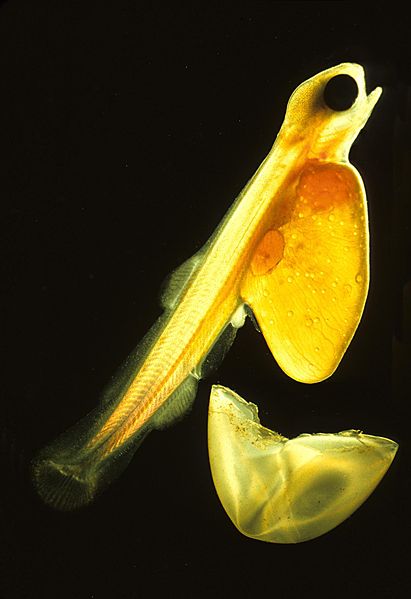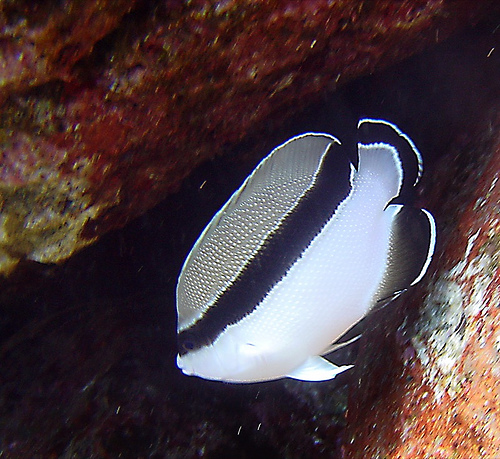Reproduction
The reproduction of angelfish is
fairly simplistic but unusual (not really like the pictures
above).
Like most fish species, mating is done by spawning.
Once mating season comes around, the male of the
harem takes one of the females away from the reef and
shoreline with him to mate.
They do not spawn in the reef due to the re ef
predators that are likely to eat the majority, if not all,
of the fish eggs the female lays.
The spawning process begins by the release of the
female’s eggs.
She usually releases an extremely large amount of eggs in
hope of a few making it to maturation. (An insurance policy
similar to
Basidiomycota) Once
this has occurred, the male releases his sperm and
fertilizes the eggs.
After this, the hatching and development of these
fish is up to nature.
Ocean currents will take these eggs into their
streamlines and move them accordingly until they are ready
to hatch. Only a
very small percentage of these eggs will last long enough to
become juveniles and ultimately mature angelfish.
ef
predators that are likely to eat the majority, if not all,
of the fish eggs the female lays.
The spawning process begins by the release of the
female’s eggs.
She usually releases an extremely large amount of eggs in
hope of a few making it to maturation. (An insurance policy
similar to
Basidiomycota) Once
this has occurred, the male releases his sperm and
fertilizes the eggs.
After this, the hatching and development of these
fish is up to nature.
Ocean currents will take these eggs into their
streamlines and move them accordingly until they are ready
to hatch. Only a
very small percentage of these eggs will last long enough to
become juveniles and ultimately mature angelfish.
The population of the bandit angelfish is ever changing. It is increasing at such a high rate that it only takes less than 15 months to double its populations! This quickly increasing population helps to resolve the problem mentioned on the home page in which the breeding of similar species created little genetic diversity. By having a population grow at such a high rate, the mutation rate within this species’ genomes is increased, ultimately reducing the likelihood that a single disease can affect all of the species’ genes in a detrimental way.
Back to Top
Back to Home
